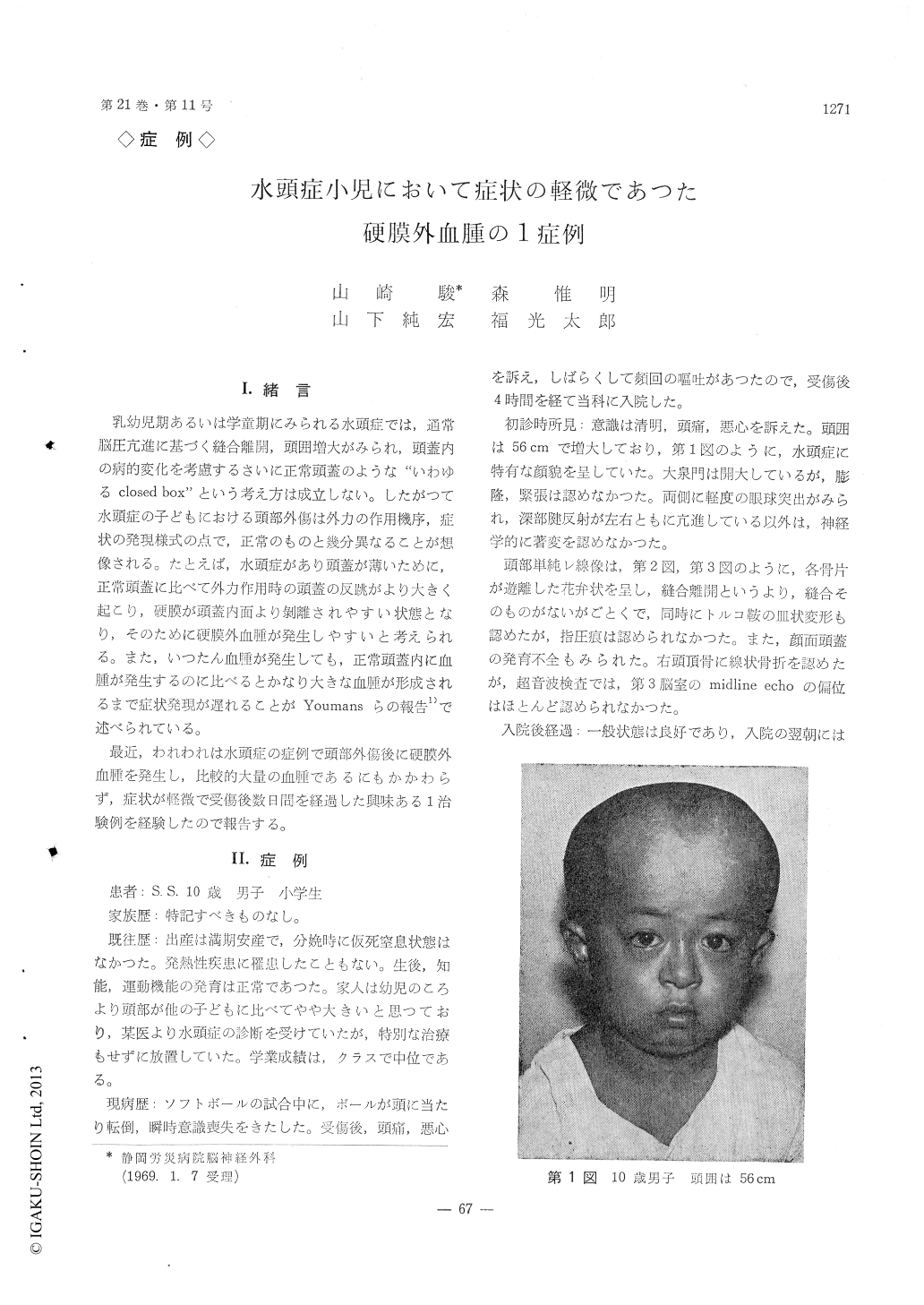Japanese
English
- 有料閲覧
- Abstract 文献概要
- 1ページ目 Look Inside
I.緒言
乳幼児期あるいは学童期にみられる水頭症では,通常脳圧亢進に基づく縫合離開,頭囲増大がみられ,頭蓋内の病的変化を考慮するさいに正常頭蓋のような"いわゆるclosed box"という考え方は成立しない。したがつて水頭症の子どもにおける頭部外傷は外力の作用機序,症状の発現様式の点で,正常のものと幾分異なることが想像される。たとえば,水頭症があり頭蓋が薄いために,正常頭蓋に比べて外力作用時の頭蓋の反跳がより大きく起こり,硬膜が頭蓋内面より剥離されやすい状態となり,そのために硬膜外血腫が発生しやすいと考えられる。また,いつたん血腫が発生しても,正常頭蓋内に血腫が発生するのに比べるとかなり大きな血腫が形成されるまで症状発現が遅れることがYoumansらの報告1)で述べられている。
最近,われわれは水頭症の症例で頭部外傷後に硬膜外血腫を発生し,比較的大量の血腫であるにもかかわらず,症状が軽微で受傷後数日間を経過した興味ある1治験例を経験したので報告する。
A 10-year-old boy with asymptomatic hydroce-phalus was admitted to the hospital because of head-ache and vomiting 4 hours after head injury. Symptoms subsided within 24 hours. Ultrasonic encephalogram was within normal limits. But elec-troencephalogram showed marked asymmetry with slow waves, predominantly in the right parieto-occipital region. Right carotid angiography per-formed 4 days after admission, revealed the presence of an intracranial hematoma. Epidural hematoma of moderate size was evacuated through burr open-ings. An hydrocephalus seemed to be progressive even after the evacuation of hematoma, with enlarg-ing head, separation of the sutures and characteristic appearance of the face, ventriculo-atrial shunt was carried out 2 months after the accident.
It is believed that the appearance of signs and symptoms of an intracranial hematoma is delayed in the presence of hydrocephalus, due to the effect of internal decompression by the dilated ventricles. Therefore we should keep close attention to the clinical course of hydrocephalic patients after head injury. If the minimal sign of an intracranial hema-toma is present, the extensive investigations includ-ing carotid angiography, pneumoencephalography, electroencephalography, etc. should be indicated. It is important to protect the handicapped brain from further damage by means of early diagnosis and prompt treatment.

Copyright © 1969, Igaku-Shoin Ltd. All rights reserved.


